Visiting the Mykines puffins |
Distance: 8km |
Difficulty: moderate
It’s nicknamed the seabird city. Real name Mykines, a small island just a speedy boat ride from mainland Faroes. It’s the places people come from all over the world with the one aim of visiting the Mykines puffins.
It was our first time puffin watching, or seeing these seabird superstars in real life. Visiting the Mykines puffins on the Faroe Islands is famous: they’re only here in summer, the 500,000 or so pairs attract thousands of people out to Mykines to see them.
Come out the right time, and see them you certainly will.
Climbing up the stone steps from the concrete jetty, we relayed with other visitors who had stayed on the island overnight (we didn’t do this, but it is possible. There are four places to stay on Mykines: Marit’s House, Gróthús, The Yellow House and Kristianhús). We had the whole day to explore the island of Mykines, arriving at 11am and not leaving until 5pm (You can view the Mykines ferry timetable and book the Mykines ferry tickets here).
Above the harbour we arrived at the village of Mykines, a pretty picnic blanket of turf rooves and multi-coloured houses. But this sparse little human habitation of Mykines village is not where the real population is. Turning left beyond them, the trail out to the seabird city begins.
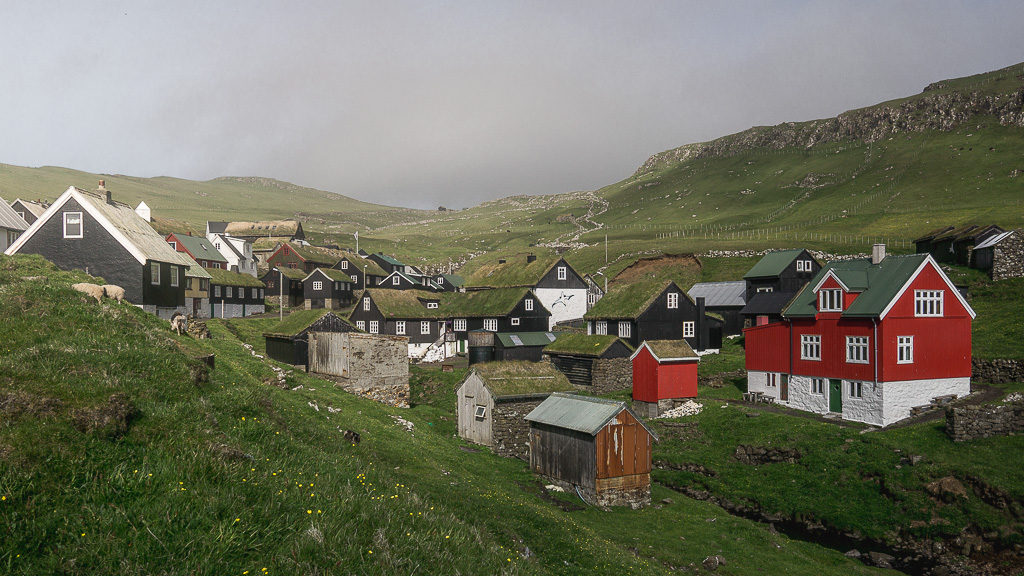
And that’s where the hi-vis person accosted us. You need a permit (buy the Mykines hiking fee here) to carry on the 4km or so walk out to the puffins, which -luckily- we had sorted. It’s to control the number of people around the puffins and protect the habitat, another reminder that we humans were the visitors here. After flashing our phones, we began.
Want to know more about hiking in the Faroe Islands? Check out our Hiking on the Faroe Islands intro guide and for a little more inspiration our 3 favourite day hikes on the Faroe Islands post
The path is steep initially, and then switchbacks sharply down, on a track cut out of the side of the cliff. It was a cold day for June, the wind whipping the waves below us as we edged down. The narrow ledge had rough steps, and was strung with fences and ropes and little gates – it began to feel quite like some puffin-oriented obstacle course. We hopped and balanced and eased our way through.
Then, about half an hour into our hike, we saw our first puffin.
Actually, our first puffins.
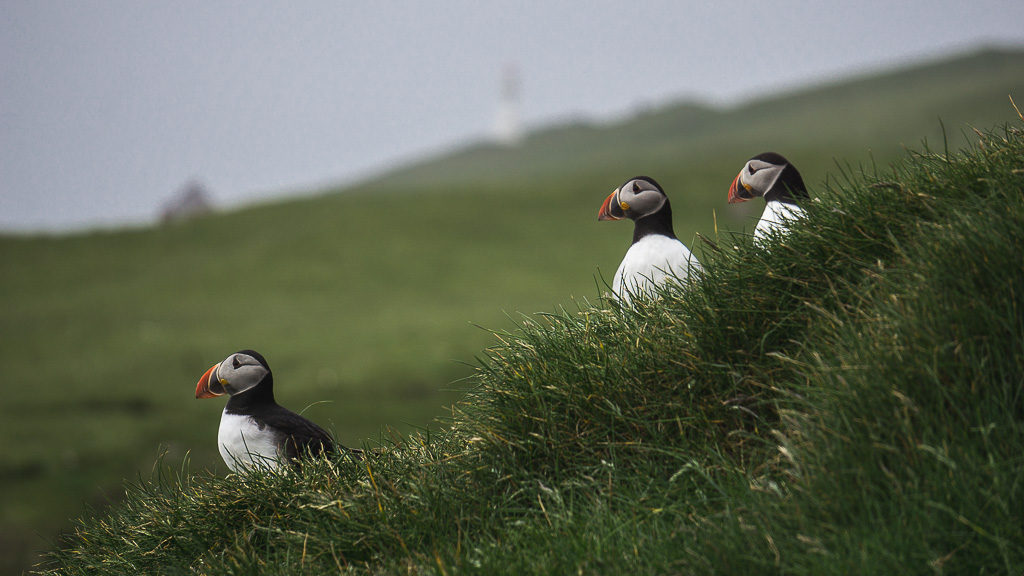
As we made our way down a steep hillside, a huddled group of six little birds suddenly poked their heads in unison over the grassy tufts, all identically cocked to one side.
The Mykines Puffins! Just ten or so feet away!
Seen in real life for the first time, several things occurred to us at once:
They were so small – much smaller than we thought. You could hold one in the palm of your hand.
They were unbothered, if slightly curious of us.
They were here, and we were alone – everyone else from the boat had fanned out along the islands, and disappeared along the route.
We crouched and watched them for twenty minutes, transfixed. They waddled around a bit, flapping and flicking their heads before suddenly, as though all silently agreeing, flew off. We continued on.
Soon we wound our way down to a bridge, strung between two separate islets. On the other side of us was Mykineshólmur, Mykines’ little twin. In the gap, scores of birds had taken up residence: not just puffins but gannets, kittiwakes and fulmars. ‘A concert hall is no match for this music,’ our guide told us. Well it was certainly a noisy neighbourhood, the chatter bouncing around the narrow tunnel as we walked across above the frothing sea.
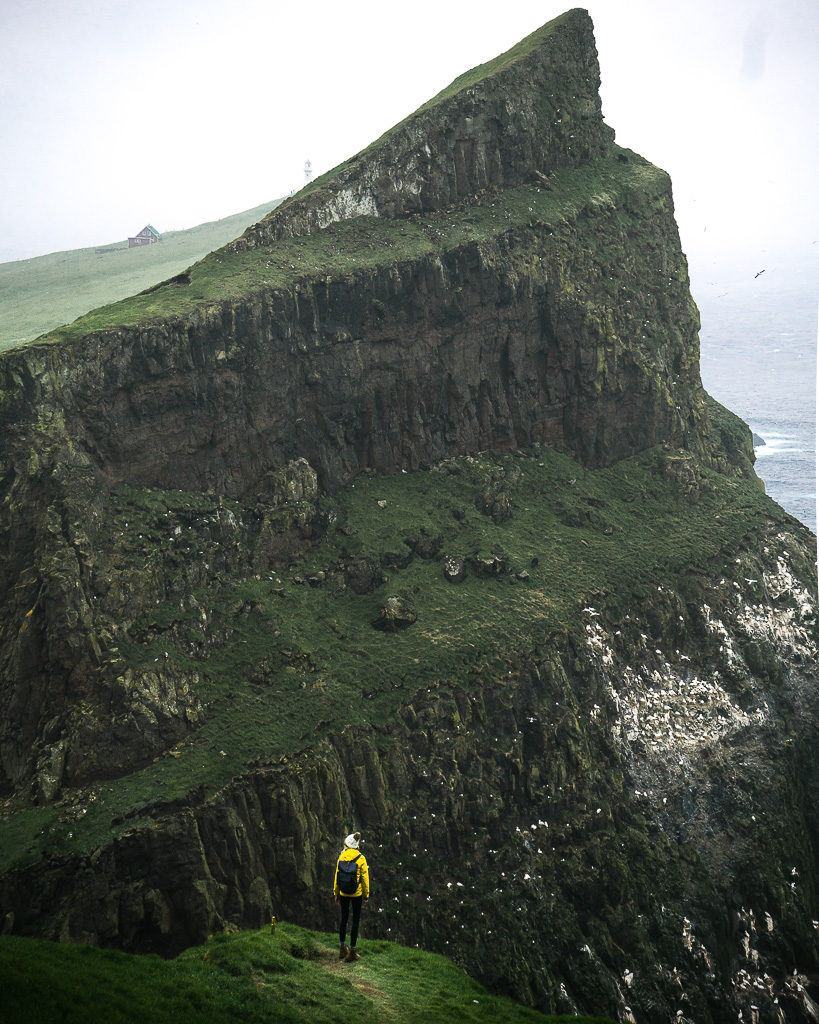
Once on Mykineshólmur, we set out towards the lighthouse, perched at the end of the islet and the location of the huge gannet colony. The sea was speckled with tiny black spots – hundreds, if not thousands. It took us quite a time to realise they were all Mykines puffins, riding the waves in huge numbers. They would take off from the sea and fly above our heads, landing feet splayed wide like emergency brakes. They’d then perch neatly in the grass, peering at their neighbours -and at us- good-naturedly. You almost expect a ‘Good morning – good morning – how do you do?’ exchange with them.
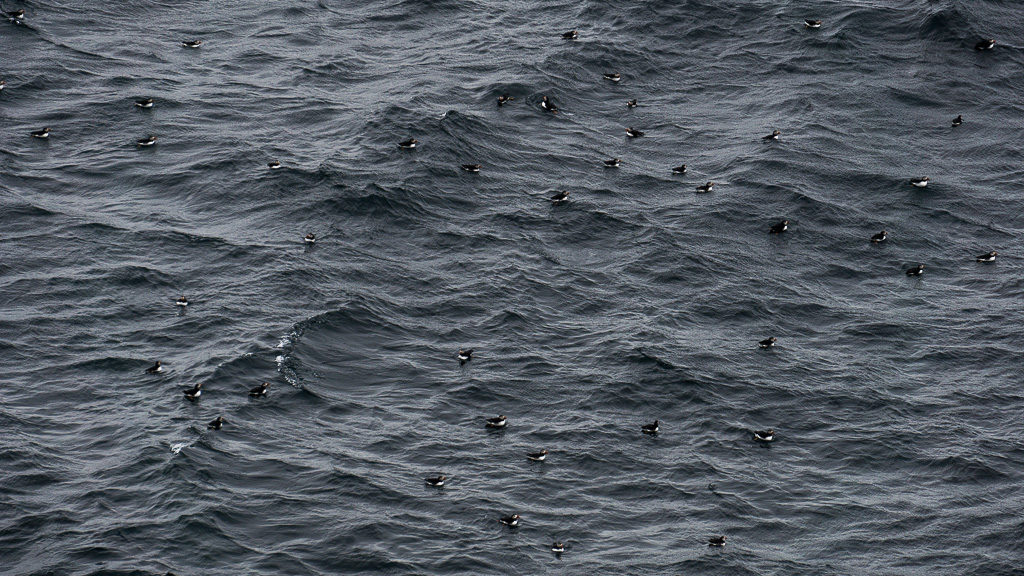
Soon after, the strong smell of a fish dinner began to float up to us from the cliff below. Peering over the edge, hundreds of eyes and clacking beaks looked back at us –an entire colony of sea gannets hidden beneath us. Here from January until November, Mykineshólmur is the only place on the Faroes you can find them. They live up high, and precariously close to the sea. (Not that that’s really a problem for seabirds, of course.) Up close they’re beautiful, with a dramatic sweep of black and gold over their skulls.
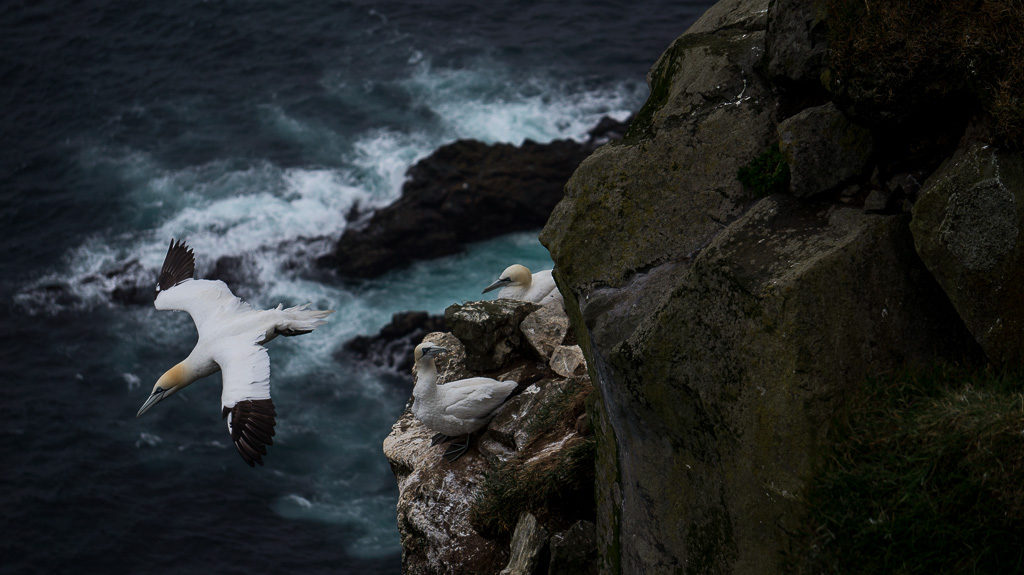
Escaping the fishy fragrance we walked over wide grassy fields strewn with sheep to reach the lighthouse, almost two hours after we’d begun. Until 1970 the lighthouse had been manned by families, living in a cottage that’s still there today. Looking out over the wilderness of the North Atlantic, no landfall until Greenland 2,000km to the west, it didn’t remotely feel like a home for humans.
Getting cold in the relentless wind, we walked back a different way, a lower route through more sheep fields. The weather rolled in. It hid the lighthouse, then the islet, then everywhere we’d just walked. Back across the bridge, back across the puffin caves. Backtracking this way we saw the cliffside that we’d spotted our first six puffins. There were 20, 30 nestled there now, beaks bright against the foggy gloom. A little hooligan gang hanging on street corners, we imagined.
We arrived back at the (human) village with an hour to go before the boat, and found a little café stuffed with people where we could sit. We got cake and coffee from an urn (a peculiarly common Faroese experience, we found [link to everything you need to know]). All of us huddled in this café, huddled in this one little village, it felt for once a place where we came second, and nature ruled supreme.
The seabird city. Day trippers & visitors allowed – but this is a local island, for locals
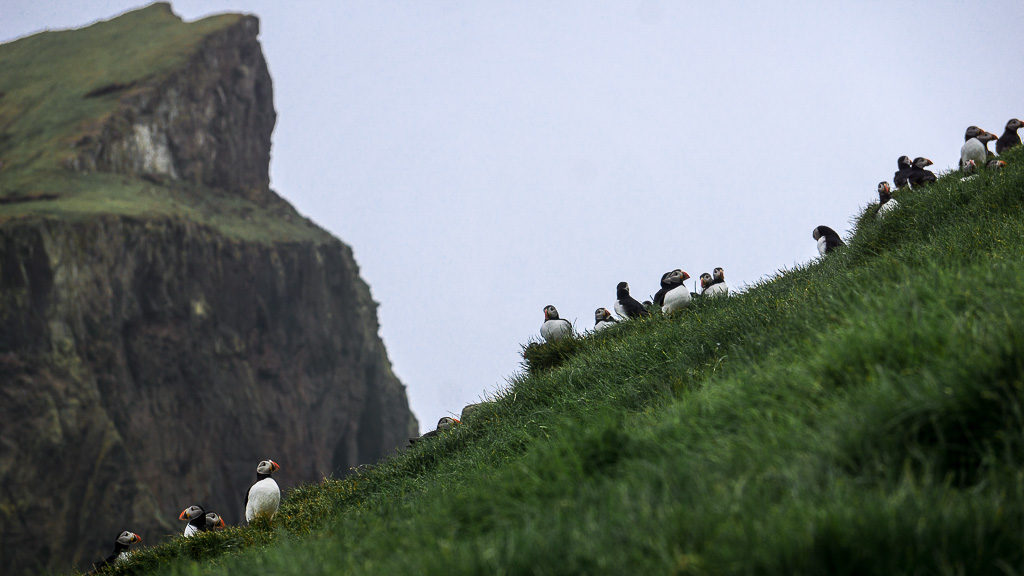
The puffins and gannets on Mykines & Mykineshólmur: some facts
Puffins
There are around 500,000 breeding pairs of puffins in the Faroes with the majority on Mykines. They are the most common bird in the Faroe Islands other than the Fulmar.
They live in nests called caves, generally found on the grassy tops of cliffs, and the babies are called pufflings .
Visiting the Mykines puffins is possible from May to August every year.
Gannets
They’re the largest seabirds in the North Atlantic with a wingspan of 2m. Two-thirds of the northern gannet actually live in Scotland, with the rest of the population divided between Canada, the Faroe Islands, Iceland and Ireland.
There is only one colony in the Faroes and yes you’ve guessed it, it’s on Mykines. You’ll find these striking birds round by the lighthouse at the farthest reaches of the Mykines hike.
Visiting the Mykines puffins in the Faroes: What to know
Route: Follow route 13 in the Visit Faroe Islands hiking guide to loop around Mykineshólmur. It begins and ends at the village and is around 8km. The path is clearly defined and it is important to stay on it to protect nests and habitats.
The boat: It takes around 45 minutes to get out to Mykines from Sørvágur, on the number 36. It costs 120 DKK return per person and needs to be booked a day or two in advance. Find the Mykines ferry timetable here and book your Mykines passage here.
Fees: As well as the boat ride out to Mykines, you must pay the hiking fee. It costs 100 DKK per person, again you purchase the Mykines hiking fee online here. We brought the confirmation email along with us on our phones, and it was indeed checked. You can do guided tours, but that’s not obligatory.
Amenities: There are public toilets, a little shop and a couple of cafes in Mykines village. It’s advisable though to take some food with you, and have lunch halfway through the hike (remember to pack all your rubbish away!)
You can download their very good Faroe Islands hiking guide here – this hike is route 13
What else do you want to know about visiting the Mykines puffins? Comment below, or leave us questions & we’ll answer them
pin it:
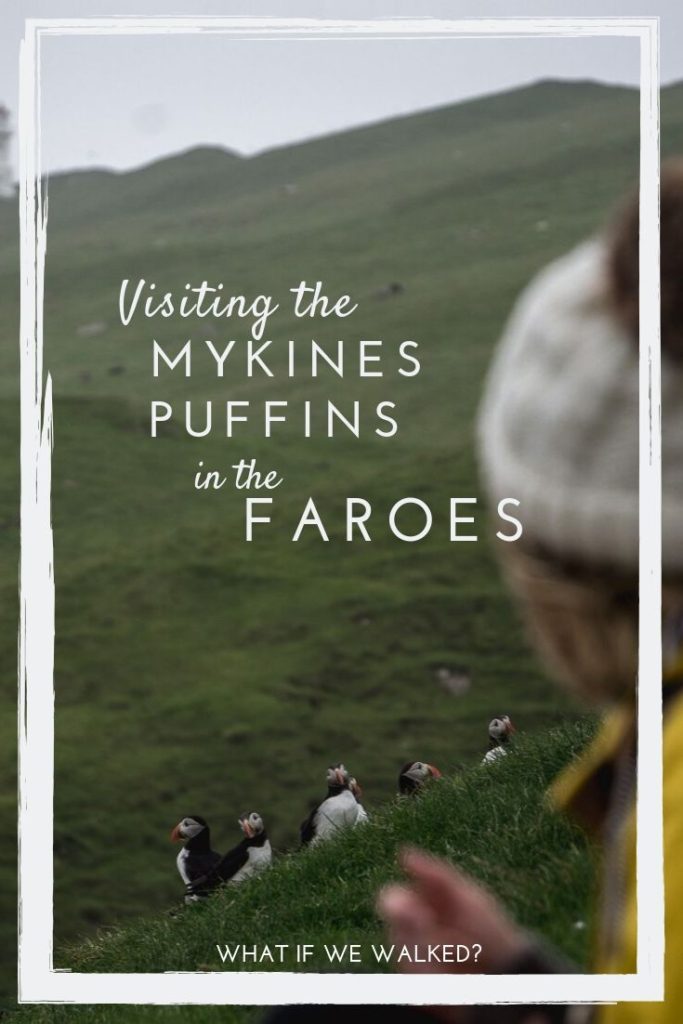
Note: we were supported on our trip to the Faroe Islands by Visit Faroe Islands. All our experiences and opinions are most certainly our own.

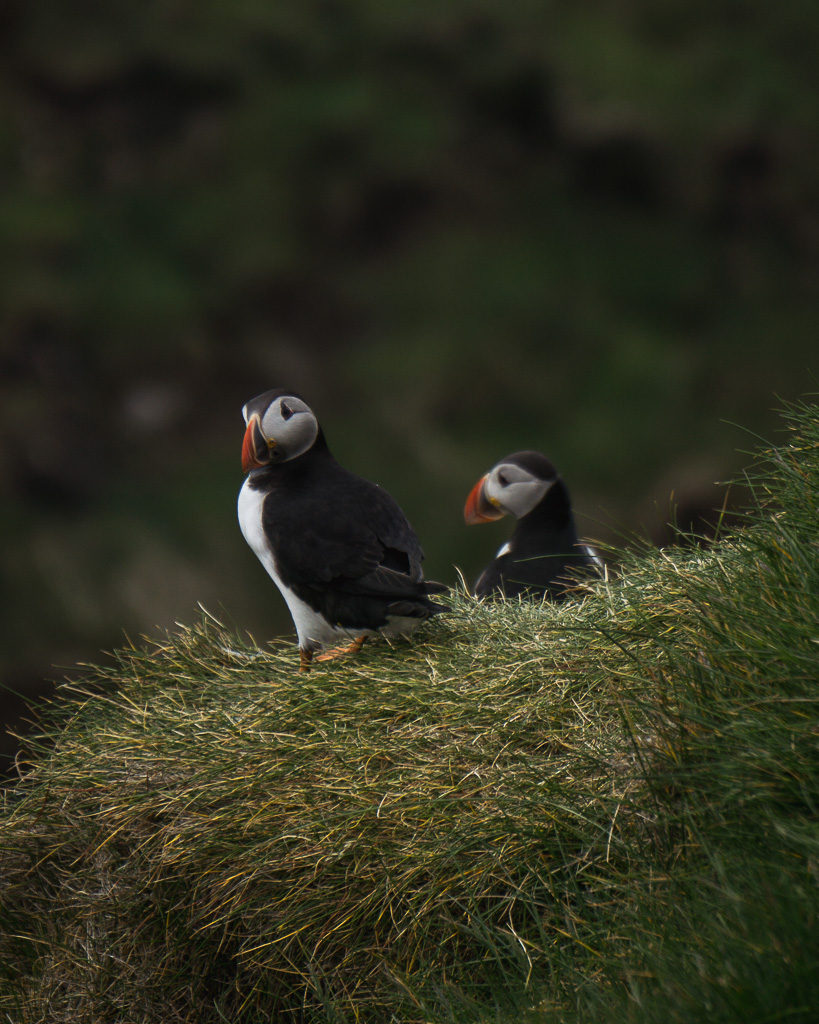
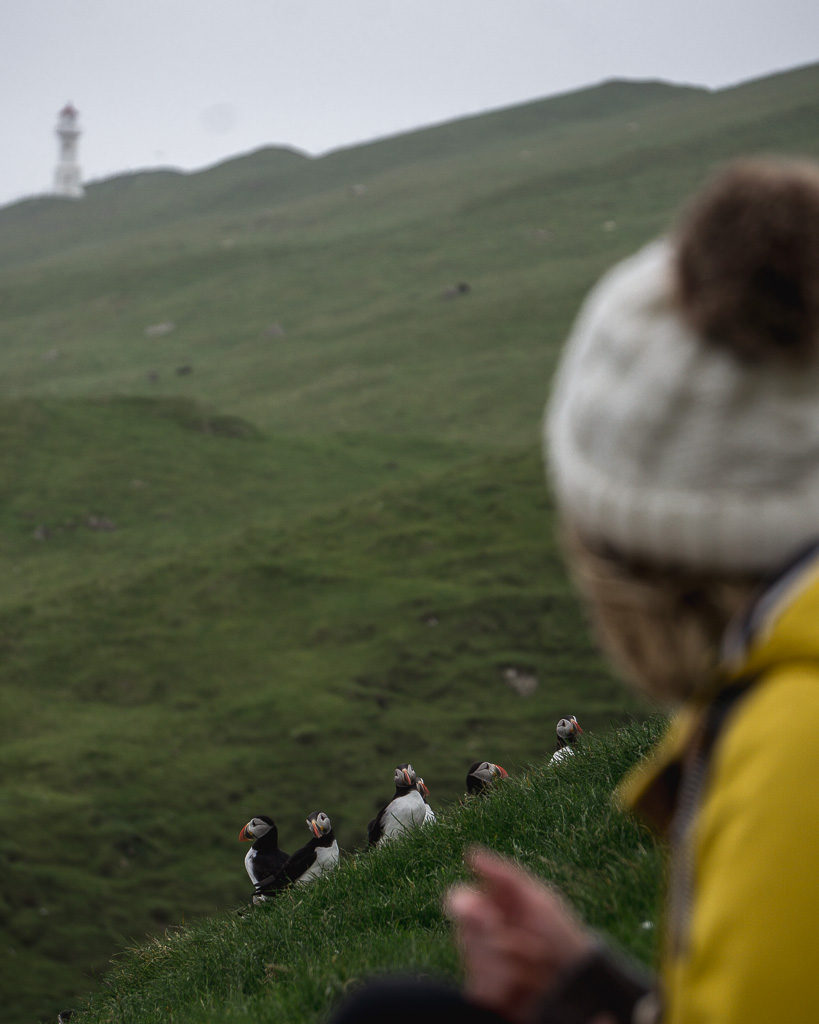
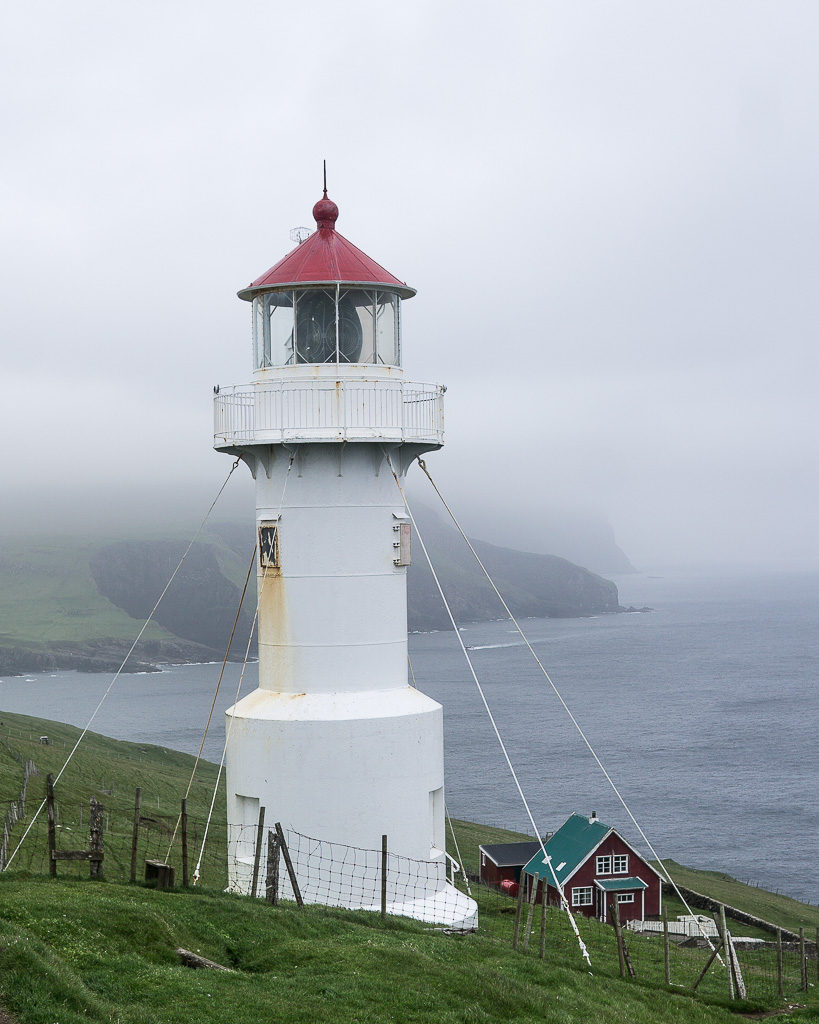
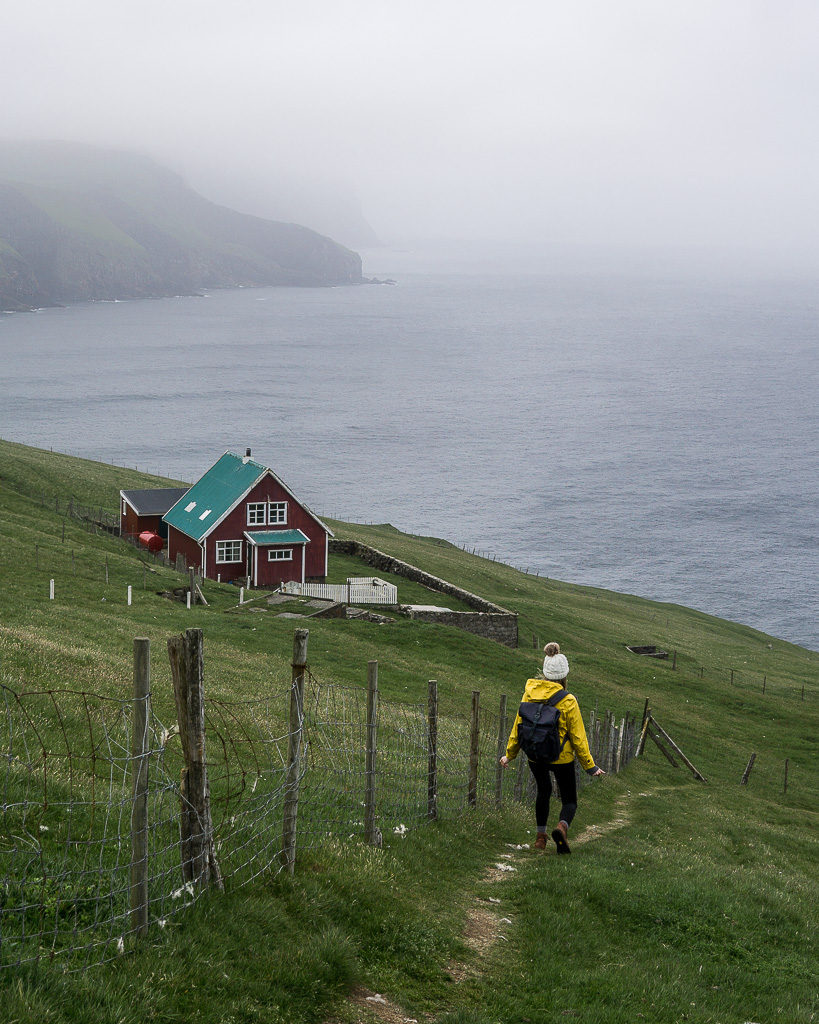
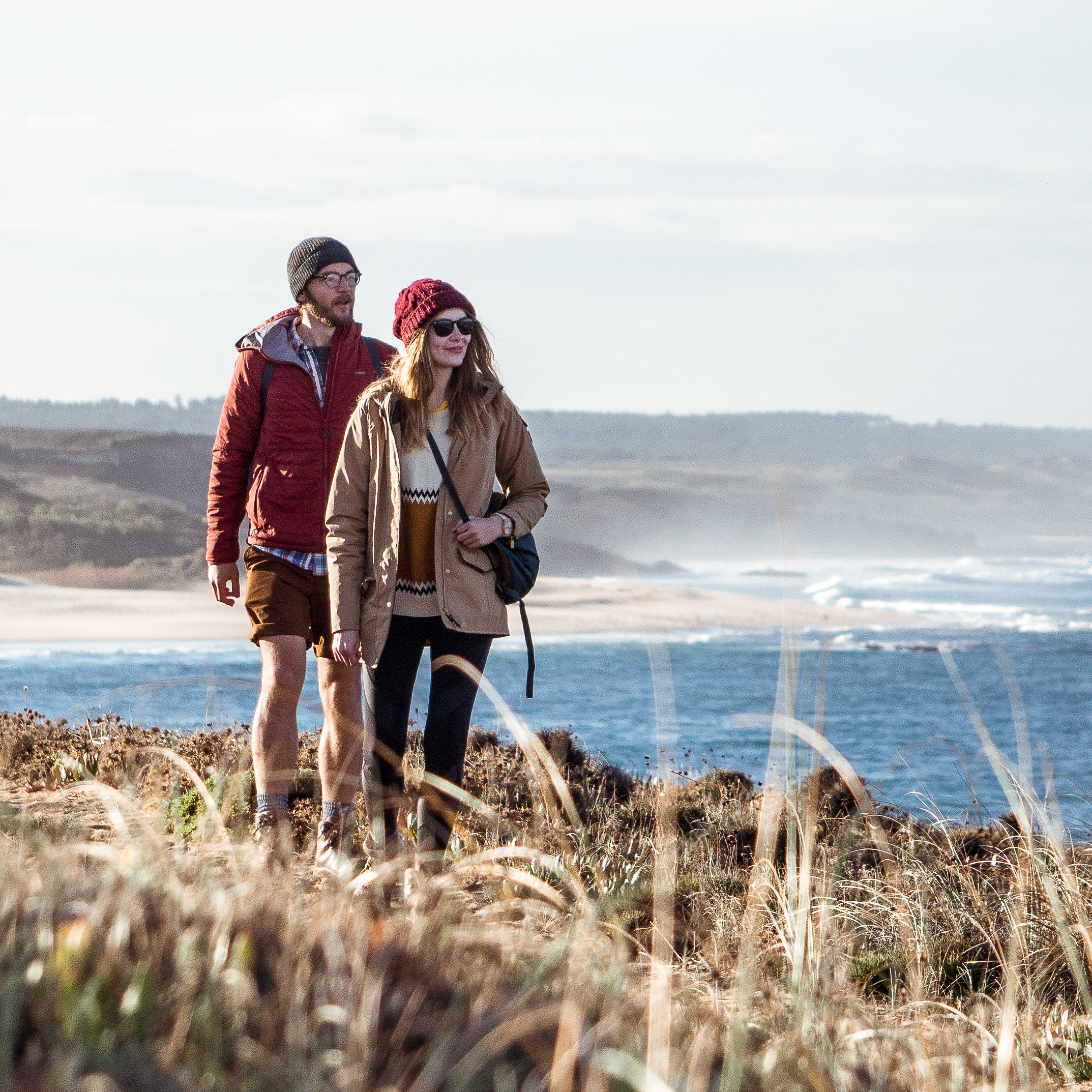
Hi Luke & Nell. I throughly enjoyed your blog about the Mykines Puffins encounter. As we would also like to visit the puffins during our trip to the Faroe Islands next year, may I know whether the hiking trail will pose a challenge to both of us? I am rather afraid of height & my wife is not someone who’s very active physically. Even though we would very much like to go for it, but we would also very much like to make sure this trip suits us in general. Thanks 🙂
Hi Eddie, good to hear from you, thank you for the comment, and great news you will be visiting the Faroe Islands and Mykines. The puffins were such a highlight of the entire trip. The hiking trail to see the puffins is steep in places and infrequently vertiginous, however when it is close to the edge there are barriers and good handrails. The path is very well constructed, wide and gradual when ascending/descending. Nell doesn’t like heights either and she was absolutely fine. And to be honest when you see the little fellows marching around outside their burrows you forget all about the walking! There is a bridge you have to cross if you want to do the whole walk to the lighthouse on an islet, and it has wooden boards with gaps you can see through (you may not like this!). But if you want to just see the puffins you don’t have to cross the bridge. They’re quite close to the village actually.
The path is relatively easy. There is an ascent at first from the village on grass, but once this is out of the way you walk along the ridge until gradually descending to the bridge mentioned above. The descent is zig-zagged nicely and goes via all the puffin burrows. Magical spot.
Hope this helps. You should definitely go and have an explore. It’s accessible, safe and a well constructed path.
Any other questions about your trip, fire away!
Thanks,
Luke
Hi Luke,
Just wanted to say that those are some marvelous photos out here. Best greetings!
Thank you very much
Hi Guys, thank you for these incredible informative posts. We’ll be in Faroe Islands in mid May. A question about hiking boots. How important are ankle high boots vs “trail runners” in your opinion? Its an important answer to a burning question! Thank you 🙂
Sorry this is so late, Michael. Hope you had a great time in the Faroe Islands – what an amazing place! Did you make it to see the Mykines puffins?
Seems rather wrong to reply to your burning question at this point, but for what it’s worth: always ankle high walking boots imo 🙂